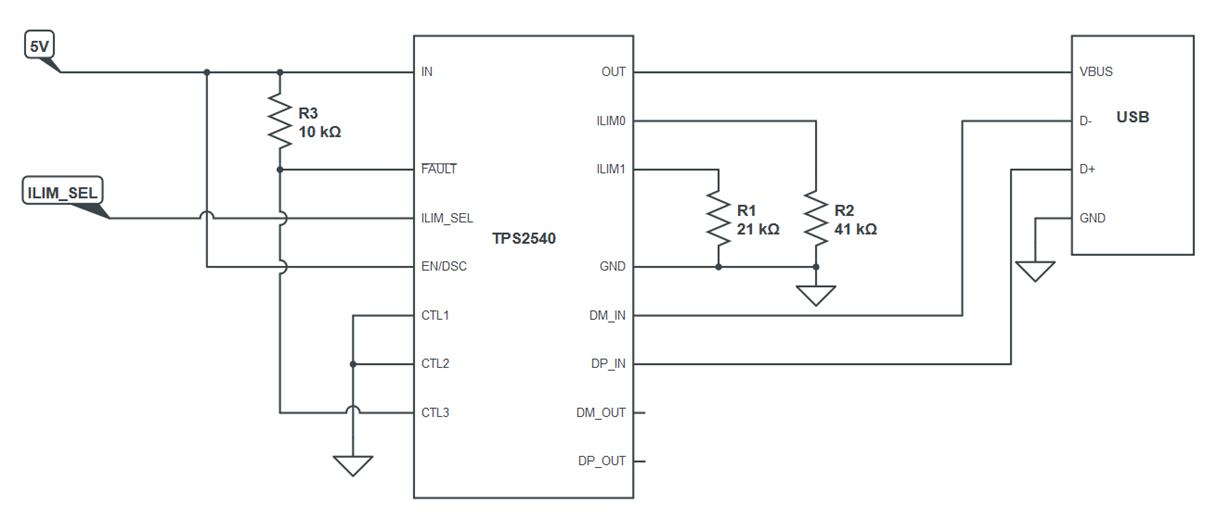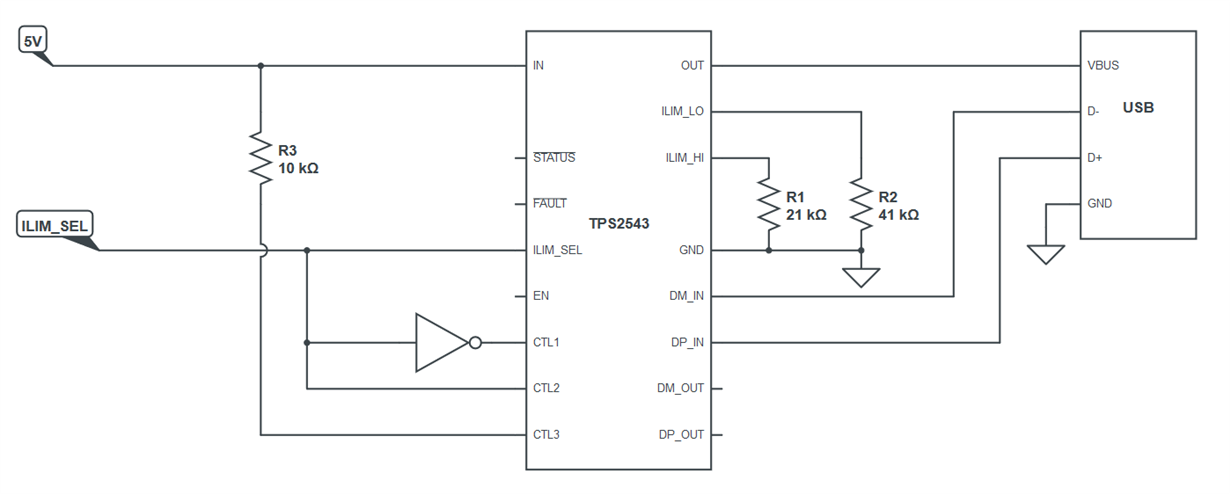Other Parts Discussed in Thread: TPS2547, TPS2544, TPS2546, TPS2543, TPS2540
Hello, I am working on a USB charger design as a Dedicated Charging Port (DCP). I would like to have two different charging currents and be able to change between them (1A and 2A) while a device is connected. I undestand that a power renegotiation is needed to be able to change the output current.
I am trying to use a TPS2541 for my design as this seems to be the simplest chip available from Texas Instruments (I have also looked at TPS2543, TPS2544, TPS2546, TPS2547...). From the TPS2541 datasheet it seems that an output discharge is used to force a renegotiation when changing between CDP and SDP:
To allow a charging port to renegotiate current with a portable device, TPS2540/40A/41/41A uses the VBUS discharge function. It proceeds by turning off the power switch while discharging OUT, then turning back ON the power switch to reassert the OUT voltage.
This discharge function is automatically applied when a change at the CTLx lines results in any of the following mode transitions.
• Any transition to and from CDP
• Any transition to and from SDP
However it is not clear to me what happens when ILIM_SEL changes. Does it force a renegotiation by discharging the output?




